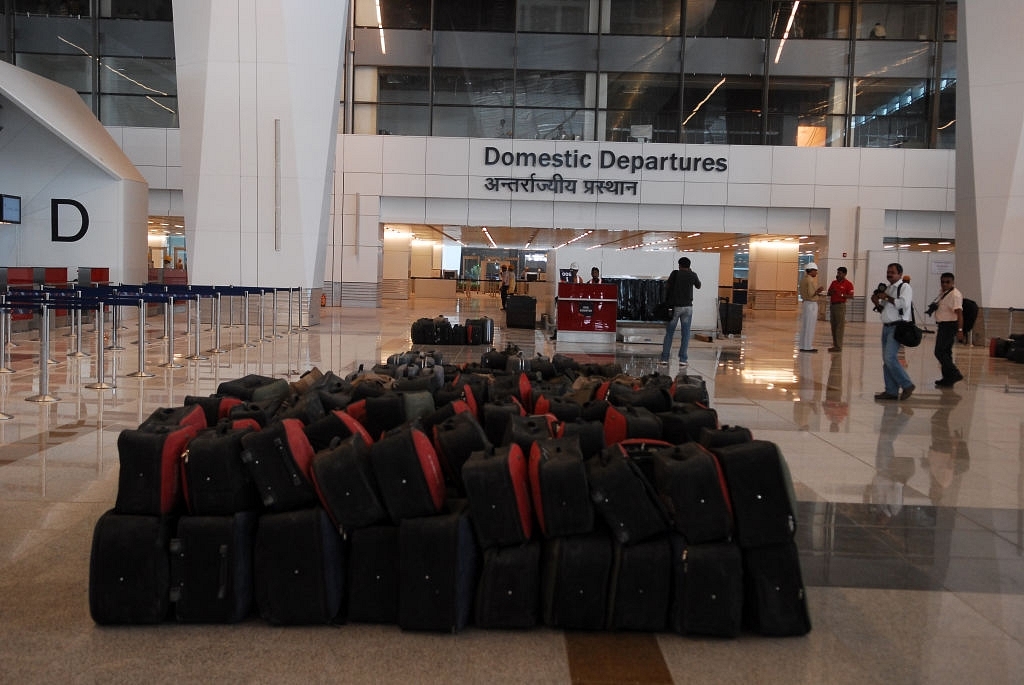Infrastructure
Why Government’s Airport Upgradation Plan Must Match Increasing Rush At Indian Airports
- India remained the world’s fastest growing domestic aviation market for the third straight year in 2017.
- While such rapid growth does bring joy and also entails more aircraft orders by our airlines, perhaps infrastructure building should precede future traffic growth.

Inside view of the newly-built Terminal 3 of the Indira Gandhi International Airport in New Delhi. (Pradeep Gaur/Mint via Getty Images)
The government has announced a much-needed expansion and upgradation of terminal buildings at three airports and has estimated a total investment of Rs 100,000 crore in the next five years in creating new terminals, development of Greenfield airports and private investment in existing joint venture airports. According to a decision by the Cabinet Committee on Economic Affairs, integrated terminals will be expanded at Chennai, Guwahati and Lucknow airports by 2031 at the latest.
According to data collected by Kotak Institutional Equities, three in four flyers in India use one of our 10 busiest airports. Our six busiest airports handled over 175 million passengers in 2016-17, which means even among the top 10 airports, these six saw two in three air passengers. At least four airports – at Delhi, Mumbai, Bengaluru and Hyderabad – are already handling passengers in excess of their maximum indicative handling capacity. The Delhi airport has been operating at 101 per cent of capacity, Mumbai at 121 per cent, Bangalore at 132 per cent and Hyderabad at 149 per cent of its capacity. That means there are airports in this country handling one-and-a-half times their capacity.
India’s air traffic growth still comes from its large metros, with the top 10 airports lying across Delhi, Mumbai, Bangalore, Chennai, Kolkata and so on. This means though there are airports/airstrips aplenty in smaller towns and cities, these do not witness enough footfalls. The fantastic growth in domestic aviation in the country over the last several years has brought into focus the woeful lack of aviation infrastructure across the busiest cities, with little relief in sight. India’s top 10 airports handled nearly double the amount of traffic in calendar 2018 at 232 million compared to just 124 million in 2013.
But even the non-metro airports are on way to getting choked. The same analysis by Kotak found that the compound annual growth rate (CAGR) at non-metro airports has also been rising fast too. Jaipur is the biggest such airport with traffic reaching 4.7 million in 2018 from just 1.8 million five years ago, a CAGR of 21 per cent. Chandigarh and Amritsar airports have also seen a CAGR close to 20 per cent during these five years. In the 10 such non-metro airports, traffic has doubled from 19.2 million to 38.1 million in five years. Obviously, capacity enhancement was needed yesterday at these airports.
For example, London has five major airports, New York has three. In some years, Delhi may get a second airport, with construction slated to begin at Jewar, near Greater Noida, by next year. According to AAI’s latest plans, approval has been provided for second airports in Navi Mumbai, Noida, Mopa (Goa), Purandar (Pune), Bhogapuram (Visakhapatnam), Dholera (Ahmedabad) and Hirasar (Rajkot).
Then, Delhi is expected to complete expansion of its terminals 1 and 3 by 2020 – traffic at Delhi is expected to increase by over 20 million passengers a year to 85 million by 2022. After years of delay, the new deadline for getting Navi Mumbai airport’s two terminals operational is 2022 again, Hyderabad too is expected to complete some expansion activity by 2020.
The issue of congestion is not restricted to terminals alone. The airside at many Indian airports is bursting at the seams too. Mumbai’s story epitomises the severe infrastructure squeeze across our busy airports. The best an airline can show for Mumbai is about 50 per cent on-time performance – which means at least every second flight at this airport is delayed.
Remember, India remained the world's fastest growing domestic aviation market for the third straight year in 2017, according to the International Air Transport Association, at 17.5 per cent, followed by China at 13.3 per cent. While such rapid growth does bring joy and also entails more aircraft orders by our airlines, perhaps infrastructure building should precede future traffic growth.
Introducing ElectionsHQ + 50 Ground Reports Project
The 2024 elections might seem easy to guess, but there are some important questions that shouldn't be missed.
Do freebies still sway voters? Do people prioritise infrastructure when voting? How will Punjab vote?
The answers to these questions provide great insights into where we, as a country, are headed in the years to come.
Swarajya is starting a project with an aim to do 50 solid ground stories and a smart commentary service on WhatsApp, a one-of-a-kind. We'd love your support during this election season.
Click below to contribute.
Latest